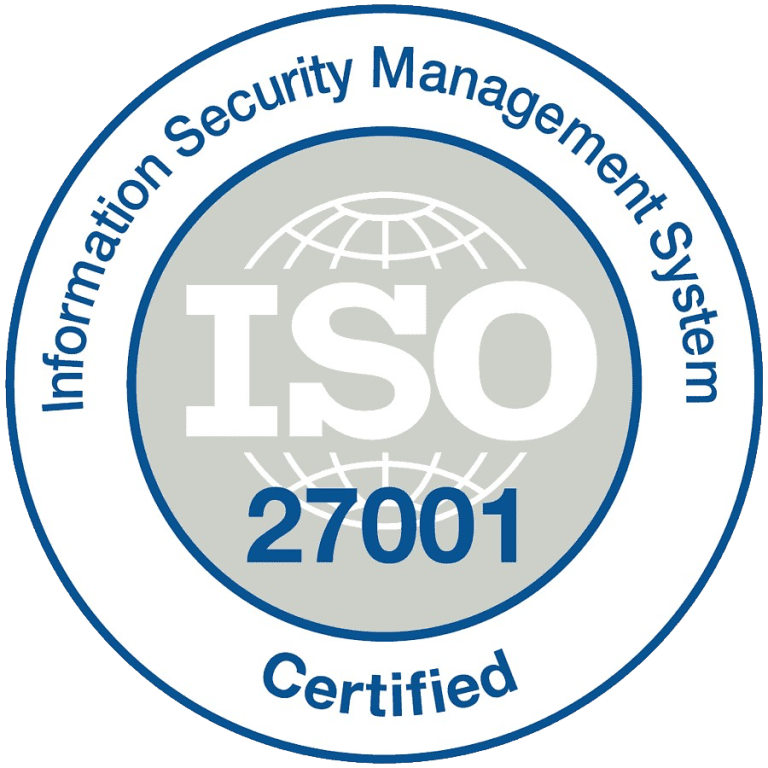USSD security is an essential communication protocol used extensively across various sectors. Its ability to work interactively simultaneously makes it worthwhile in places with limited or unreliable internet access.
USSD enables banking transactions, mobile payments, and customer support through simple numeric codes, ensuring accessibility for users with basic mobile phones.
Despite its advantages, including simplicity and accessibility, immediate communication between users and service providers, cost-effectiveness, etc., USSD is not immune to security risks.
As a straightforward and widely used technology, it is essential to recognize and address potential weaknesses in USSD to protect business operations and customer data.
This article examines the critical aspects of USSD security and provides actionable strategies to mitigate risks and enhance protection against potential threats.
Common USSD security threats
USSD, though practical and widely used, is vulnerable to several security threats that can risk sensitive information and interrupt services. Below are ten (10) key threats that businesses should be aware of:
Eavesdropping
Eavesdropping on USSD messages involves unauthorized interception of the communication between a user and a service provider.
Also, this threat occurs when attackers capture and decode the USSD traffic to gain access to sensitive information transmitted during the session.
Since USSD messages are not inherently encrypted, they can be susceptible to interception by anyone with the necessary technical capabilities.
So, attackers who successfully eavesdrop on these messages can access private details such as account numbers, personal identification numbers (PINs), or transaction data, which they can use for fraud.
The consequences of eavesdropping can be severe. Attackers may use the captured information to execute unauthorized transactions, commit identity theft, or engage in other types of financial fraud.
To stop this risk, service providers must implement encryption protocols for USSD sessions and employ secure communication channels to protect sensitive data from being intercepted during transmission.
Session hijacking
Session hijacking involves an attacker taking over an active USSD session, potentially gaining control over the ongoing interaction between the user and the service provider.
Once an attacker hijacks a session, they can perform unauthorized actions such as initiating transactions, accessing personal data, or altering account details.
This can occur if the attacker can exploit vulnerabilities in session management or obtain session identifiers through various means.
In addition, session hijacking can have severe consequences, resulting in significant financial losses and privacy breaches. Service providers should implement robust session management practices to counter this threat, including session timeouts, re-authentication requirements for sensitive actions, and monitoring unusual activities.
Ensuring session identifiers are securely generated and transmitted can also help prevent unauthorized access.
Phishing attacks
Phishing attacks involving USSD services typically involve fraudsters tricking users into divulging personal information by masquerading as legitimate service providers.
These attacks frequently involve fake USSD codes or messages that look like they are from trusted sources, such as banks or service providers. Users might be asked to provide sensitive information like PINs or account details, which attackers use for fraud.
Phishing attacks can lead to severe consequences, such as identity theft, financial loss, and harm to the reputations of both users and service providers.
To guard against phishing, it is essential to educate users about potential phishing risks and encourage them to verify the authenticity of USSD requests before sharing personal information.
Service providers should also employ mechanisms to detect and block suspicious activities and ensure that users know official communication channels.
Denial of service (DoS) attacks
Denial of Service (DoS) attacks target USSD systems by overwhelming them with excessive requests, causing service disruptions for legitimate users.
This attack can render USSD services unavailable or severely degraded, impacting business operations and customer experience.
Attackers may use automated tools or botnets to flood the system with requests, exploiting vulnerabilities in the USSD infrastructure.
Successful DoS attacks can cause operational downtime, financial losses, and damage the service provider’s reputation. To mitigate the risk of DoS attacks, service providers should implement rate limiting, monitor traffic patterns for anomalies, and deploy network security measures to detect and block malicious traffic. Regular system maintenance and updates can also help strengthen defenses against such attacks.
Man-in-the-middle (MITM) attacks
Man-in-the-middle (MitM) attacks involve an attacker intercepting and potentially altering the communication between the user and the service provider.
In the context of USSD, the attacker can intercept messages and manipulate the data being transmitted or eavesdrop on sensitive information.
MitM attacks can be particularly damaging as they allow attackers to access or modify information without the knowledge of the communicating parties.
Encryption for USSD communications is essential to protect the transmitted data and prevent MitM attacks. Service providers should also ensure that all data exchanges are conducted over secure channels and implement measures to detect and prevent unauthorized access.
Spoofing
Spoofing attacks involve creating fake USSD codes or services to deceive users into revealing personal information. Attackers may craft fraudulent USSD requests that mimic legitimate services, tricking users into entering their credentials or financial details.
If users are not cautious about verifying the authenticity of the USSD requests they receive, this can result in unauthorized access to accounts or financial loss.
Service providers should implement verification measures to confirm the legitimacy of USSD services and codes to combat spoofing. Users should be educated about recognizing legitimate USSD services and encouraged to report any suspicious activity.
Data leakage
Data leakage occurs when sensitive information is unintentionally exposed due to inadequate security measures during the transmission or storage of USSD data.
Also, this can happen if data is improperly encrypted or if security protocols are not followed. Data leakage can result in the unauthorized release of personal information, which can be exploited for fraudulent activities or identity theft.
Strong encryption protocols for USSD communications and secure data storage are essential to prevent data leakage. Service providers should also adhere to best practices for data protection and privacy.
Brute force attacks
Brute-force attacks involve using automated tools to systematically guess PINs or codes until the correct one is found. Attackers may deploy these tools to attempt numerous combinations quickly, gaining unauthorized access to USSD services if the security measures are insufficient.
If successful, brute-force attacks can compromise accounts and sensitive information. To defend against brute force attacks, it is crucial to implement measures such as account lockouts after a certain number of failed attempts, complex PIN or code requirements, and rate limiting.
Monitoring for unusual login attempts and employing security features that limit the number of attempts can help mitigate the risk of brute-force attacks.
Session fixation
Session fixation attacks involve tricking users into using a specific session identifier that the attacker previously set up. By altering the session identifier, the attacker can take over the session and gain unauthorized access to the service.
This attack relies on the ability to predict or control session identifiers, allowing the attacker to exploit active sessions. To protect against session fixation, service providers should ensure that session identifiers are securely generated and managed. Implementing session expiration policies and requiring re-authentication for sensitive actions can help prevent unauthorized access.
Code injection
Code injection attacks involve inserting malicious code into USSD requests to manipulate or exploit the service. Attackers can use this technique to execute unauthorized commands or gain access to restricted system areas.
Code injection can compromise the integrity of USSD services and lead to unauthorized access or data breaches. To defend against code injection attacks, it is essential to validate and sanitize all user inputs to prevent the execution of malicious code.
Service providers should use strong input validation checks and conduct regular security assessments to find and fix potential vulnerabilities.
Strategies for enhancing USSD security
The strategies for enhancing USSD security
- Encryption: Encrypting USSD sessions helps protect the data transmitted between the user and the service provider. Ensure that sensitive information is encrypted to prevent unauthorized access during transmission.
- Authentication: Implement strong authentication methods to authenticate users before granting access to sensitive services. Authentication might include multi-factor authentication (MFA) or PIN codes.
- Session management: Monitor USSD sessions to promptly detect and respond to unusual activities. Implement session timeouts and limit the number of concurrent sessions to reduce the risk of hijacking.
- User education: Educate users about potential USSD scams and phishing attempts. Encourage them to verify the authenticity of USSD requests and to report any suspicious activities immediately.
- Regular security audits: Conduct security and vulnerability assessments of your USSD systems. Spotting and fixing vulnerabilities before they are exploited is vital for maintaining security.
- Collaboration with mobile operators: Work closely with mobile network operators to ensure your USSD service complies with industry security standards and addresses network-level vulnerabilities.
Implementing best practices for USSD security
To effectively protect your business and customers from USSD security threats, consider these best practices:
- Develop a security policy: Establish a comprehensive security policy specifically for USSD services. This should include encryption, authentication, session management, and user education guidelines.
- Stay updated: Stay updated on the latest security trends and vulnerabilities related to USSD. Regularly update your security measures to address new threats.
- Incident response plan: Develop and keep an incident response plan to swiftly handle security breaches. This plan should detail the steps during an attack and include strategies for communicating with affected users.
USSD: Securing your business and customer trust
USSD is a powerful tool for businesses and customers, offering essential services without internet connectivity. However, securing USSD services is paramount to protecting sensitive data and maintaining trust.
By implementing robust security measures, educating users, and staying vigilant, businesses can safeguard their USSD operations against potential threats.
Prioritizing USSD security enhances customer satisfaction and strengthens the overall integrity of your business operations.





